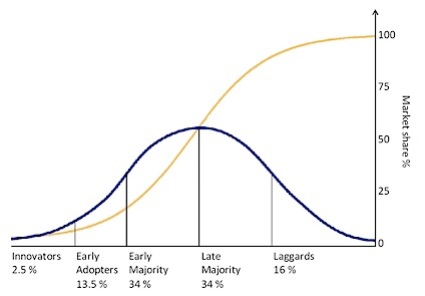Where Good Ideas Come From, 4 minute version
Via Boing Boing]
Here’s a short video promo for Steven Johnson’s upcoming Where Good Ideas Come From: The Natural History of Innovation, a lecture on the way that transformative ideas incubate for long times, come out of left field, and thrive best when there’s no one foreclosing on them because they’re too weird or disruptive.
[More]
I love this video. It encapsulates how new ideas come into being and that communication is critical. Organizations that make it easy for individuals to communicate and exchange ideas will have more innovative ideas.
This is slightly different than creating a social network that adopts and adapts to change easily, although they go hand in hand. Both reduce the friction of information exchange. What Johnson discusses are the connections that help disruptive innovators come up with their disruptive technologies. They connect to a wide range of other communities which can provide great ideas.
An adaptive community has the ability to filter and adopt new ideas rapidly. The good ideas get moved through rapidly, often interacting with others along the way to evolve into great ideas. There will also be strong links back to the disruptors, creating a knowledge cycle that gets to a solution faster.
A poorly adaptive community puts a road block on the ability of disruptors to connect to outside communities while at the same time providing sparse routes for their ideas to percolate through the organization. These communities not only have fewer innovative ideas, because of the lack of good communication linkages but will also be very resistant to adopting anything new, even if shown that the innovation is useful.
In a well balanced community, the communication between people has little to slow it down, disruptors connect to the communities they need for generating ideas, filters and mediators help discover the great ideas and pass them onto the doers, who can often reduce these ideas to practice. With the right feedback loops, this can be very efficient.
Web 2.0 approaches can be very effective in helping identify and support these types of adaptive communities.
